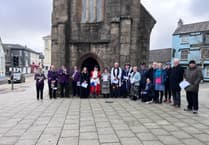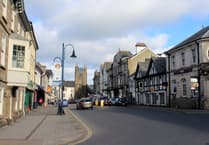TWO British aircraft owners and pilots were invited to LAS Aerospace Ltd headquarters in Okehampton recently to collect sponsorship items for the upcoming commemoration flights to honour the events of D-Day in June 1944.
Pilots Richard Horner and Joe Picarella were greeted at the Okehampton headquarters by director Scott Powell and general manager Jamie Sluggett who handed over promotional material for the event which is taking place in June in Normandy.
Las Aerospace has been a part of the light aviation scene in the UK since 1982, working from its Devon bases at Shebbear and then later at Okehampton. Along with its partners it has been supplying parts worldwide to both private and commercial aircraft maintenance facilities and is recognised as the main suppliers to nearly all light aircrafts taking part in the D-Day event.
Both Devon pilots are part of a group that makes up a flight of 75 aircrafts transiting to Normandy to take part in the large formation flight routing across the now famous beaches of northern France, which were the landing areas for the allied forces’ ground attack of 1944, which began the end of World War Two.
Richard Horner said: ‘This year will be the 75th anniversary of D-Day. Leading up to events in 1944, Devon became a focal point for practise, training and eventually embarkation to the beaches of Normandy. Dartmoor and its surrounding villages would have been awash with allied, mainly American troops, preparing themselves for what at this time was a secret operation. Places like Folly Gate, Okehampton, Hatherleigh, Moretonhampstead, Chagford and Saunton Sands, to name a few, would have witnessed an increase in volumes of troops and equipment being moved into the area ready for their deployment to the south coast ports of Devon and Cornwall before commencing the sea crossing to Normandy.’
Richard said that among the equipment was an ‘essential’ piece — the American 1941 design Piper Cub L4 Liaison aircraft. He said this was the ‘workhorse’ of the US Army and used for many different assignments.
‘The aircraft was light, sturdy and easy to assemble and move on the ground in the combat zone. Because of its short take off and landing capabilities, it was able to be launched with its two-crew members from small and sometimes muddy fields and roads. Its primary job was for field gun observations from above the firing line where it was used to direct artillery on to the enemy. The white and black lines painted on the aircraft were for identification during the D-Day mission.
‘In Devon today, we have several of these aircrafts still flying from airfields around our county. On June 5 this year they will be leaving for France to join around 75 other aircrafts to commemorate the anniversary of D-Day.
‘On June 15 we will be returning to land on the beaches of Saunton Sands to also commemorate the event and the fact that this beach was used by the allies to practise for the events of 1944.’




